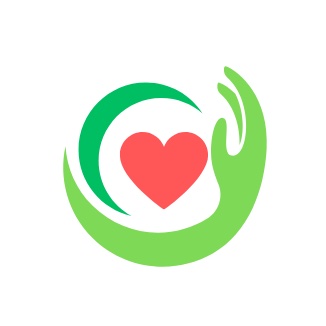Developing a professional portfolio as a healthcare worker is a valuable tool for showcasing your skills, experience, and accomplishments. It not only helps you track your professional growth but also demonstrates your qualifications and abilities to potential employers, clients, or peers. A well-organized portfolio can also be used as a reflective tool for personal development. Here’s a guide on how to develop a comprehensive and effective professional portfolio as a healthcare worker.
1. Choose a Format for Your Portfolio
Decide whether you want your portfolio to be physical, digital, or both.
- Physical Portfolio: A traditional, hard-copy portfolio can be useful for in-person interviews or when you need a tangible document for reference. Use a professional binder with clear plastic sheet protectors to organize the materials.
- Digital Portfolio: A digital portfolio is easy to share and update. You can create it using a website builder, a platform like LinkedIn, or simply by using cloud storage services like Google Drive or Dropbox. A digital portfolio allows you to include multimedia elements such as videos, case studies, or interactive content.
2. Create a Professional Summary
Start your portfolio with a brief professional summary or bio. This section should provide an overview of who you are, your career trajectory, your areas of expertise, and your professional philosophy. The summary should highlight your unique strengths, experiences, and goals as a healthcare worker.
- Example: “I am a compassionate and dedicated registered nurse with over five years of experience in emergency care. My passion lies in delivering patient-centered care while maintaining high standards of clinical excellence. I am skilled in critical care, team leadership, and patient education.”
3. List Your Education and Certifications
Include all relevant education, degrees, and certifications that you have obtained. Make sure to mention the institutions, graduation dates, and any honors or distinctions you received. For healthcare workers, listing certifications, training, and licenses is critical. This section should highlight your qualifications and ongoing commitment to professional development.
- Example:
- Bachelor of Science in Nursing, University of Health Sciences, 2018
- Certified Emergency Nurse (CEN), 2019
- Basic Life Support (BLS) and Advanced Cardiovascular Life Support (ACLS), American Heart Association, Current
4. Highlight Your Work Experience
The work experience section is one of the most crucial components of your portfolio. Provide detailed information about your previous and current roles, highlighting specific duties, accomplishments, and any unique contributions you made in each position. Use bullet points to describe key responsibilities and achievements, and wherever possible, quantify your impact with numbers or outcomes.
- Example:
- Registered Nurse – Emergency Department, City General Hospital
- Provided direct patient care to a diverse patient population, assessing and monitoring patients with acute conditions.
- Administered medications and managed care plans in a fast-paced, high-stress environment.
- Trained and mentored junior nursing staff, fostering teamwork and effective communication.
- Contributed to a 10% reduction in patient wait times by streamlining intake processes.
- Registered Nurse – Emergency Department, City General Hospital
5. Showcase Your Skills
List the specific skills you have developed as a healthcare worker. These skills could be clinical, technical, or interpersonal. Be sure to include both hard and soft skills. For example, technical proficiency in medical equipment or patient care software, as well as your ability to collaborate with a healthcare team or communicate with patients and families.
- Example:
- Clinical Skills: Patient Assessment, IV Insertion, Wound Care, Medication Administration
- Technical Skills: Electronic Health Record (EHR) systems, Microsoft Office Suite, Medical Coding
- Soft Skills: Empathy, Teamwork, Leadership, Time Management, Problem Solving
6. Include Case Studies or Projects
Including case studies or specific projects you’ve worked on can provide evidence of your abilities and accomplishments in real-world healthcare settings. Choose examples where you made a tangible impact on patient care, efficiency, or quality of service. If confidentiality agreements permit, consider including de-identified patient stories that demonstrate your expertise.
- Example:
Case Study: Improving Patient Discharge Process
“Identifying inefficiencies in the discharge process, I led a team that streamlined patient education materials and developed a checklist system, reducing patient readmissions by 15% over six months.”
7. Add Recommendations or Testimonials
Testimonials from colleagues, supervisors, or patients can enhance the credibility of your portfolio. Include letters of recommendation or short quotes from those who have worked with you, attesting to your professionalism, competence, and compassion. This provides a third-party perspective on your skills and contributions.
- Example:
“Jane is an exceptional nurse who goes above and beyond for her patients. Her dedication and ability to remain calm under pressure have been invaluable in our busy emergency department.”
– Dr. Emily Thompson, Emergency Room Physician
8. Incorporate Continuing Education and Professional Development
Show your commitment to lifelong learning by including any ongoing education or professional development activities. Highlight any relevant workshops, seminars, conferences, or online courses you’ve attended or completed. Demonstrating that you stay current with industry standards and trends will enhance your portfolio’s value.
- Example:
- Attended “Advancements in Cardiac Care” Conference, 2022
- Completed “Telemedicine for Healthcare Providers” online course, 2023
9. Include Professional Memberships and Associations
List any professional organizations you are a member of, such as national or regional healthcare associations. Membership in professional groups shows your dedication to networking, staying informed about industry changes, and adhering to ethical standards.
- Example:
- Member, American Nurses Association (ANA)
- Member, Emergency Nurses Association (ENA)
10. Reflect on Your Personal Growth
As part of your portfolio, include a reflective section where you can discuss your personal growth and development as a healthcare worker. Talk about challenges you have faced, how you overcame them, and what you have learned throughout your career. This section is particularly useful for showing your ability to adapt and learn from experiences.
- Example:
“Throughout my career, I have faced many challenges in managing high-pressure situations. One key learning moment was during a multi-car accident where I had to triage patients under intense time constraints. This experience taught me the importance of staying calm, prioritizing patient care, and working collaboratively with a team under pressure.”
11. Update Your Portfolio Regularly
A professional portfolio is a living document that should be updated regularly as you gain new skills, certifications, and experience. Make sure to update your portfolio with new accomplishments, changes in your career path, and additional recommendations. An up-to-date portfolio will always be ready for any new career opportunities or professional evaluations.






